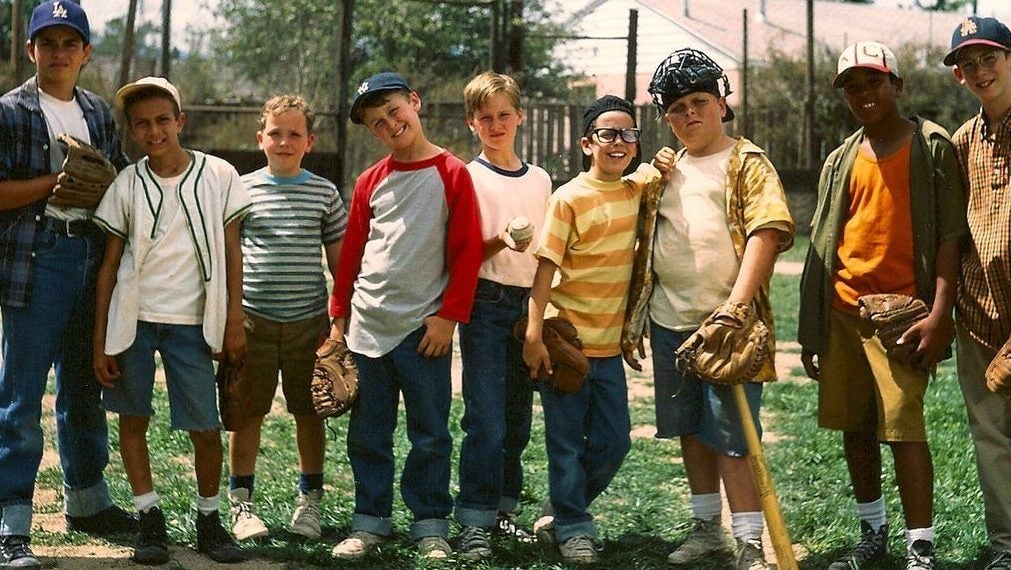Why “The Sandlot” is still so special, 25 years later
Baseball isn’t the most popular sport in America. Even many of its most ardent supporters would be hard-pressed to make the case that it’s the most exciting to watch. But you wouldn’t know that from the deep canon of beloved baseball films. Perhaps the most treasured of them all, The Sandlot, turns 25 this week, just as Major League Baseball begins another season.


Baseball isn’t the most popular sport in America. Even many of its most ardent supporters would be hard-pressed to make the case that it’s the most exciting to watch. But you wouldn’t know that from the deep canon of beloved baseball films. Perhaps the most treasured of them all, The Sandlot, turns 25 this week, just as Major League Baseball begins another season.
No sports film has had as large an impact on the sport, or its players, than The Sandlot has had on the MLB. Last month, a few players from the Milwaukee Brewers re-enacted a scene shot-for-shot from the film in honor of its 25th anniversary (the team is also hosting a Sandlot-themed game night later this season). The MLB is celebrating the film in various ways this season, including with t-shirts and a new line of Topps trading cards. Countless professional players have cited the film as inspiration; former Boston Red Sox slugger David Ortiz told the cast they were his “heroes.”
A coming-of-age tale released in 1993, The Sandlot followed a ragtag gang of baseball-obsessed kids in California’s San Fernando Valley over the summer of 1962. It’s told in hazy sketches of summertime frolic—group visits to the community pool, block parties on the Fourth of July, treehouse sleepovers, and s’mores-making. The only discernible plot is the zany and misguided effort by the kids to retrieve a ball signed by Babe Ruth that was launched over the fence of their makeshift playing field and into the neighbor’s yard, where an infamously bloodthirsty dog keeps watch.
The Sandlot grossed only a hair over $30 million when it first came out and garnered lukewarm reviews from critics. In the years since, though, thanks to cable re-runs (it’s always on TV in the US), home video, merchandise, and word-of-mouth, the film has become a staple of the American entertainment diet.
It’s the rare sports film to be totally and unabashedly in love with the sport it’s about while still being accessible (and relatable) to people who have never played it. It’s a baseball movie, of course, but it’s also about youthful naiveté, about nicknames, and about interacting with a world before it can corrupt you, when the worst that could happen to anyone is to be gobbled up by the dog next door. The Sandlot is about discovery and imagination. It’s not about “making it” or “winning the big game.”
And yet, there is something deeply nostalgic, romantic even, about baseball in particular—and The Sandlot knew how to bring that out. Maybe it’s the sport’s storied history filled with towering, larger-than-life figures (like the aforementioned Ruth). Maybe it’s the unique aural pleasure of hearing the ball hit the barrel of the bat in the perfect spot. Maybe it’s the smell of hot dogs and fresh-cut grass, the seventh inning stretch (and other weird traditions), the dirt on the pants, the dust clouds that follow a slide into second base, the salty sting of sunflower seeds as they marinate on your tongue.
It also helps the film’s longevity that it remains so quotable. You’ve probably heard, or perhaps even said, “You’re killin’ me Smalls” even if you’ve never seen The Sandlot. You’ve seen “Heroes get remembered, but legends never die” on someone’s memorial or obituary. You or someone you know can recite all the Babe Ruth epithets, from “The Colossus of Clout” to “The King of Crash.”
The Sandlot was all of this distilled into a quippy, 100-minute snapshot of Americana that today feels almost like an ancient relic. It’s easy to reduce the past to “simpler times” and ignore the reality that this was never the case, but the past of The Sandlot was indeed a simpler time and place. Maybe not a real one, but a true one, tapping into that week or month or year or decade in our lives when it didn’t matter—to you, at least—what world leaders were saying (or tweeting) to each other. What mattered was the crack of the bat, the rumble of fireworks, and that untouchable feeling of playing a game with your friends in a vacant lot.